Affiliate disclosure: This post may contain affiliate links. Please see our Privacy Policy.
Raspberry jelly is easy to make at home with just two ingredients: raspberries and sugar. No need to add commercial pectin for this old-fashioned seedless raspberry jam.

Homemade raspberry preserves are a real treat, tart and sweet all at the same time and just bursting with fresh raspberry flavor. Just one problem…the seeds.
Seedless raspberry jam, also known as raspberry jelly, has all that amazing raspberry flavor but without the seeds.
There are a number of quick and easy ways to remove the seeds before making raspberry jelly. After that seedless raspberry jam comes together in about 30 minutes on the stove.
This simple raspberry jelly comes together without added pectin. Since raspberries are naturally tart and acidic, there’s no need to add lemon juice either (unless you want to).
Just two ingredients, raspberries and sugar, and you’re well on your way to a silky smooth homemade raspberry jelly.

How to Make Raspberry Jelly
The first step to making raspberry jelly is extracting the raspberry juice while removing the seeds.
One of the simplest methods for juicing raspberries involves either cheesecloth or a jelly bag. Start by placing the raspberries in a saucepan with a few tablespoons of water. Mash with a potato masher or the back of a spoon.
Turn on the heat and bring the raspberries to a simmer. Cook about 5-8 minutes, until they’ve released their juices and completely fallen apart.
Pour the raspberry juice into a jelly bag and allow it to drain overnight (or at least 4 hours). Alternately, line a fine-mesh strainer with butter muslin and use that as a jelly bag.
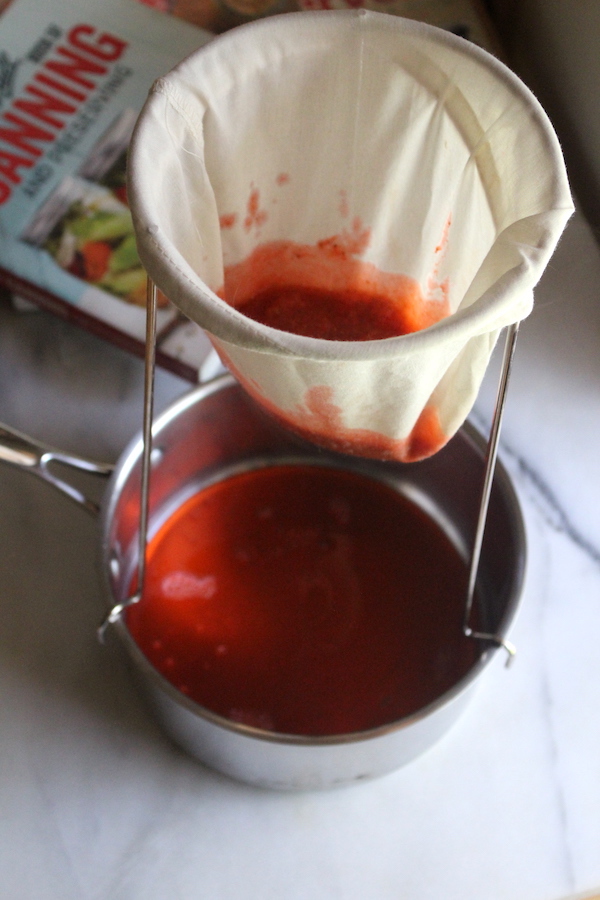
This simple method is pretty foolproof and works efficiently with minimal equipment. This year, however, I’ve fallen in love with my steam juicer.
I originally bought it for juicing blackcurrants for blackcurrant jelly and blackcurrant mead, as they’re notoriously difficult to cleanly juice with a jelly bag. Since then though, I’ve used it for just about every fruit under the sun…even a really epic cherry wine…
and now homemade raspberry jelly!
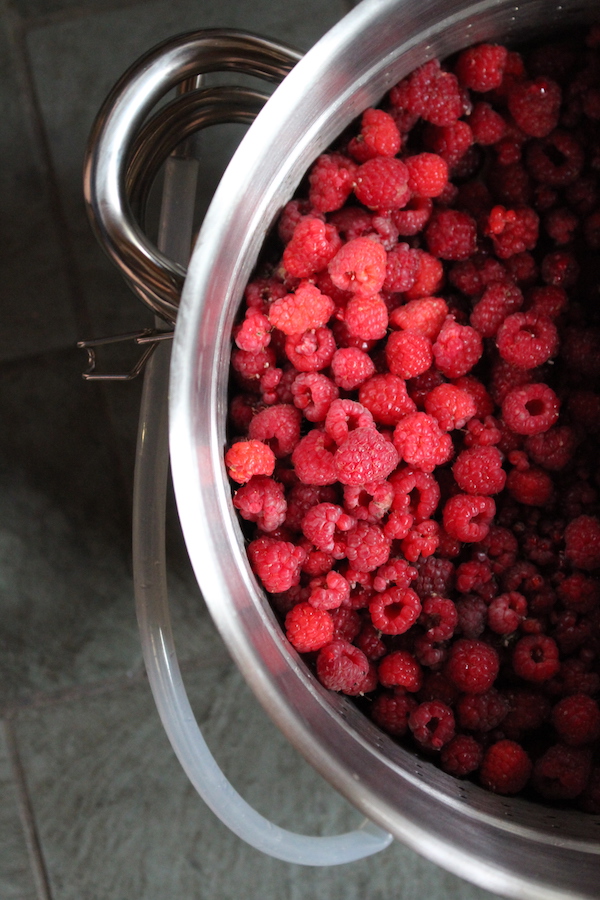
I started with 4 pounds of raspberries or about 8 pints. That yielded precisely 5 cups of juice.
This raspberry jelly recipe is in ratios, however. Start with more or less raspberries, but just be sure to measure the juice before proceeding.
For every cup of extracted raspberry juice, add one cup of sugar. You can use less sugar, but it will take considerably longer to reach gel stage, and your yield will be lower.
My raspberries were quite tart, so it worked beautifully, but consider adding a bit of lemon juice if you have very sweet fruit.
Next, add the raspberry juice and sugar to a heavy-bottomed deep-sided pot. Don’t fill the pot more than about 1/3 to 1/2 of the way, as raspberry jelly foams quite a bit while it’s cooking.
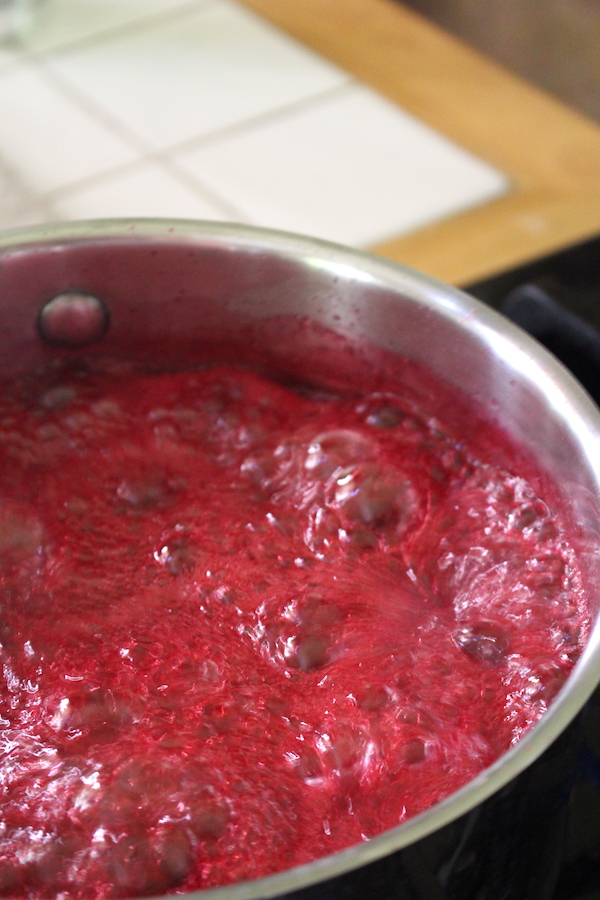
Boil the raspberry juice and sugar on medium-high heat, stirring frequently to prevent scorching. Watch for overflows, and stir the bubbles down if they start to come near the top of the pot.
After about 30 minutes, the jam should be at or near gel stage.
Gel stage is when the sugar concentrates enough to raise the temperature to 220 degrees on an instant-read thermometer (at sea level). For every 500 feet above sea level, that drops by 1 degree as the boiling point of water lowers with elevation.
We’re right about 1000 feet in elevation, so I finish my raspberry jelly at 218 degrees F.
Lacking an instant-read thermometer, place a plate in the freezer and test the jelly’s consistency as it gets close. When finished, a small amount spooned onto the cold plate should set up quickly and it should wrinkle when you push it with a fingernail.
You can also do the spoon test. Scooping up a spoonful out of the pot and watching how it pours. If it drips off the spoon it’s not ready, wait until it sheets off the spoon.
Either way, once the raspberry jelly reaches gels stage, it’s time to turn off the heat and get it into clean canning jars.
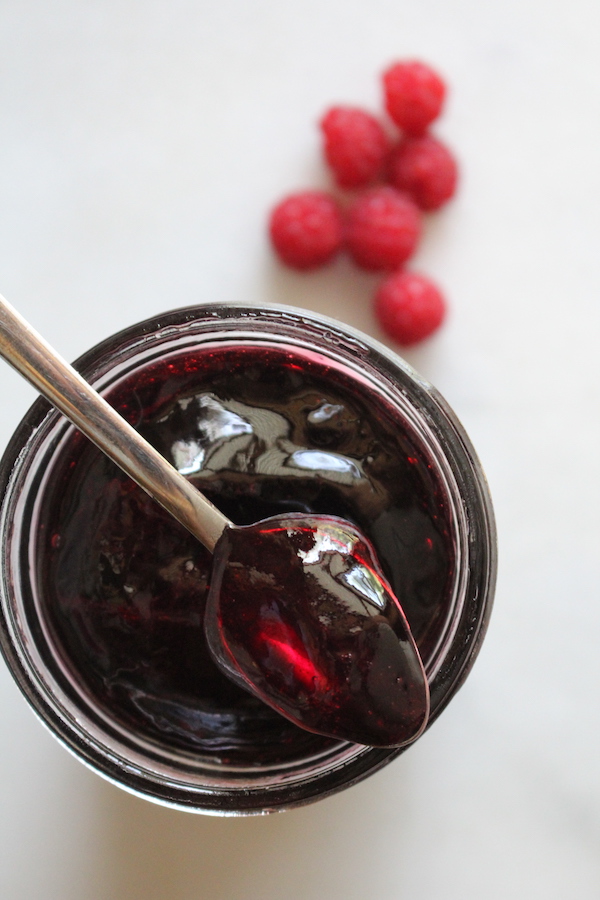
Canning Raspberry Jelly
Raspberry jelly can be made as a refrigerator or freezer jelly, or you can water bath can it for long-term preservation at room temperature.
If you’re canning, fill jars leaving 1/4 inch headspace. Air bubbles shouldn’t really be an issue with this seedless raspberry jam since it’ll flow easily off the ladle, but de-bubble the jars if necessary.
Cap with 2 part canning lids and process in a water bath canner for 10 minutes.
Remove the jars to a towel on the counter to cool, and check seals after 24 hours. Store any unsealed jars in the refrigerator for immediate use and put the rest up in the pantry.
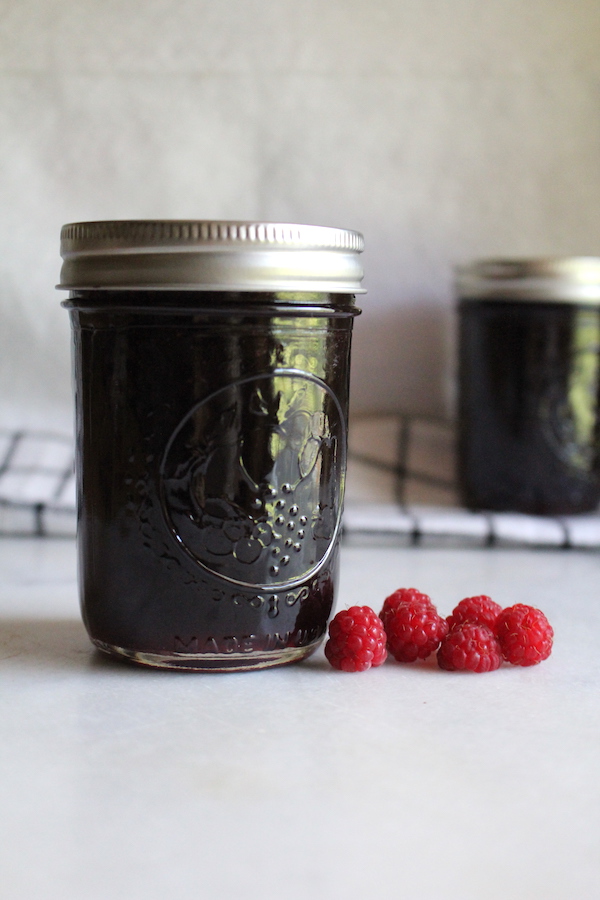
Jelly Recipes
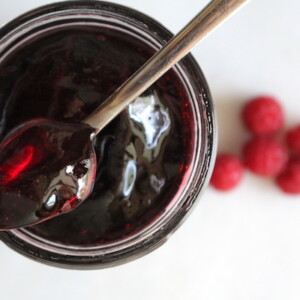
Raspberry Jelly (Without Added Pectin)
Ingredients
- 5 Cups Raspberry Juice, from about 8 pints fruit
- 5 Cups Sugar
Instructions
- Extract raspberry juice from fresh or frozen raspberries. The simplest method is bringing them to a boil for a few minutes in a saucepan, then straining through a jelly bag or cheesecloth.
- Measure the juice and add 1 cup of sugar for every cup of raspberry juice.
- Bring the sugar and raspberry juice to a boil over medium-high heat, using a deep heavy-bottomed saucepan.
- Cook, stirring frequently, for about 30 minutes until the mixture reaches gel stage. Watch for boil overs and scorching.
- Test for gel stage with an instant-read thermometer (220 degrees F at sea level), or on a plate placed in the freezer.
- Once gel stage is reached, remove the raspberry jelly from the heat and ladle into canning jars, leaving 1/4 inch headspace.
- Store in the refrigerator for immediate use, or process in a water bath canner for 10 minutes.
Notes
More Easy Summer Jam Recipes
Looking for more canning recipes? Keep your jam pot bubbling with these…

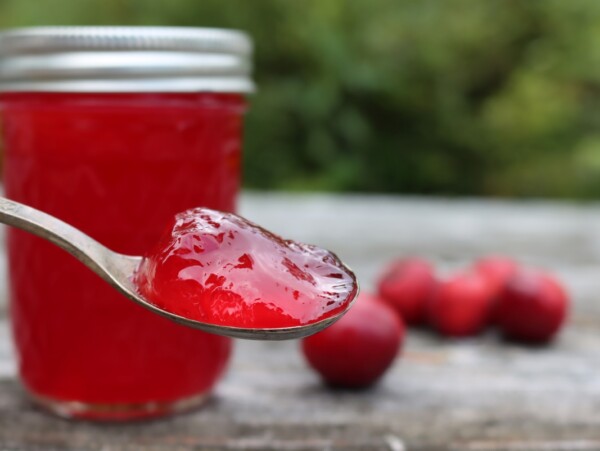
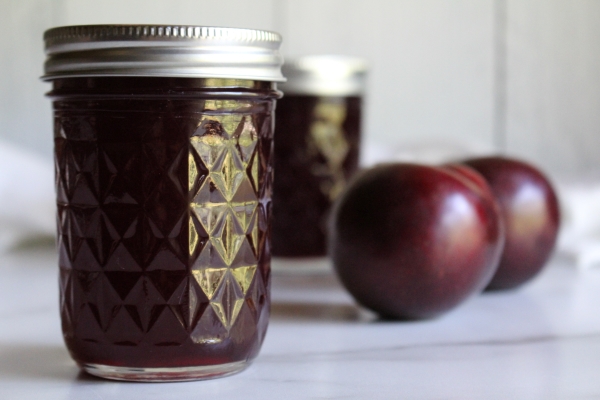
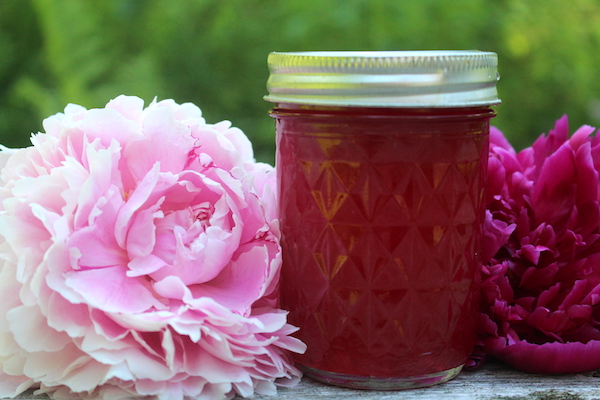
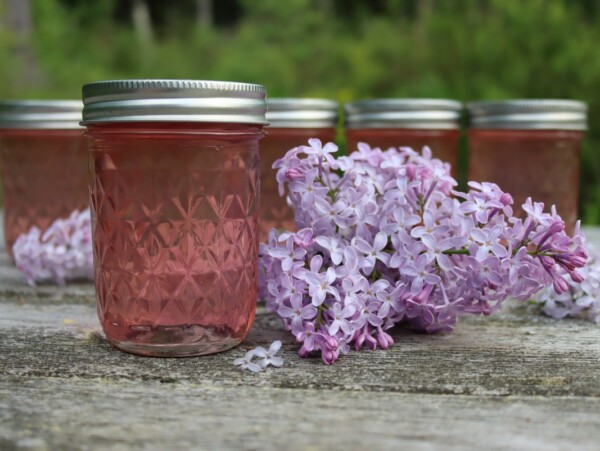
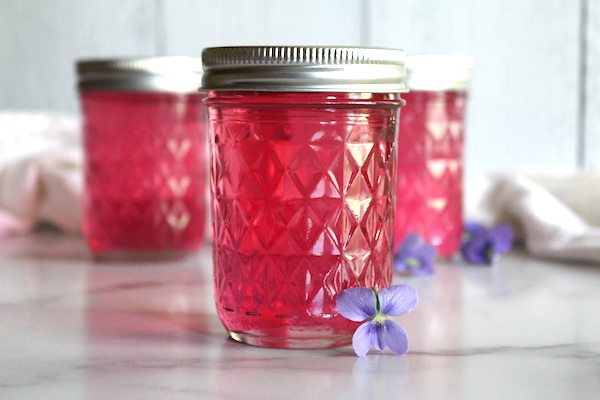
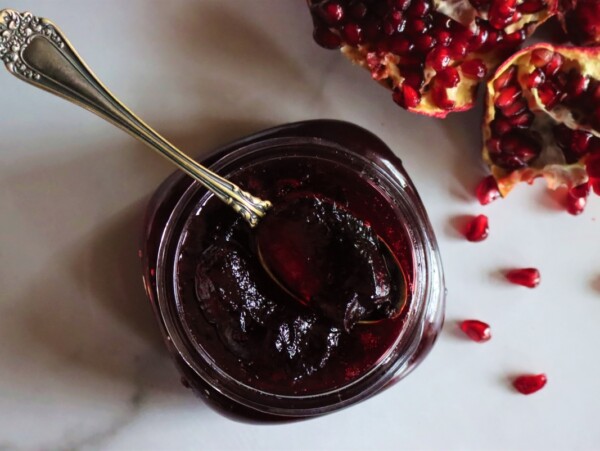
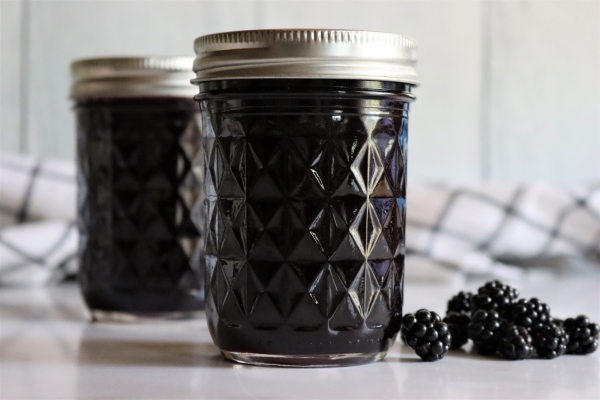










I have just made this jelly and unlike my other attempts with other recipes it has actually set! This could be down to my purchase of a proper preserving pan in a thrift shop instead of using standard saucepans which tend to creep up the sides all the time and need stirring down, but I think it is the recipe. Delicious! I am now going to try water bath canning 😁
Wonderful!
I really appreciate the ratio recipe which is practical for folks who grow large quantities. There cannot be found a better piece of equipment for jelly making than a STEAM JUICER! Thanks for mentioning it. Great recipe! Thank you!
I luv it
Hi I made this jelly today but it hasn’t set. I had 4 cups of juice and used 4 cups sugar and boiled it until it reached the temperature you said in the recipe. I’m wondering if it’s not set by tomorrow should I open them and boil again but add liquid pectin this time. What do you think?
Wait 24 to 48 hours before opening the jars. You can also stick them in the fridge. Sometimes this helps to set them up. If they still haven’t set up, you can recook it. You want to whisk 1/4 cup of sugar and 1 Tablespoon of powdered pectin for every 4 cups of jam. Add your jam and pectin mixture to the pot, mix until dissolved, boil for 5 to 10 minutes or until thickened.
I use pantyhose knee hi‘s as a jelly bag to get my juice(eg raspberry or blackberry) that I use for making jellies.I cook the fruit just to soften before getting my juice, and you can squeeze this jelly bag to get maximum juice released & still have clear jelly result.
If I add a few Habaneros to this recipe, should I add lemon juice for more acid?
Yes, you would definitely want to add some more acid. You can probably do an internet search and find a recipe that will tell you the exact ratio that you need.
I was instructed to put it on medium high but i put it lower and it still ended up burning
Last year I gave myself a copper jam pan for my birthday and have made apricot and apple jam without pectin so thank you for your recipe it worked like a charm.
What a lovely birthday gift. So glad you’re enjoying the recipes.
Hi
I love jams and jellies, but I don’t care for the sugar. So I use Pomona pectin. Is there anything wrong with using pectin?
And I admire the stainless steel juicer!! I have an enamel one that I brought with me from Germany when I came to the states in ‘94. All I ever used it for was juicing black elderberries – gallons of it. Still trying to grow some here in Alaska.
Nope, there is nothing at all wrong with using pectin if that’s what you want to do.
I added chopped hot chilli to my jelly and its delicious. Great to eat with soft cheese
Sounds yummy.
Thank you for this recipe. I have had a jelly bag for about 6 years and never used it! Saw this simple recipe and had raspberries from out allotment and some in the freezer and thought this is the time. It turned out beautiful, really tasty and I got the setting point just right (which is sometimes an issue with my jam making). I live in UK by the way.
That’s wonderful. So glad you enjoyed the recipe.
Hi, have you ever made your own pectin? I’ve been reading and started saving, pits, seeds, apple peels and cores and some orange pith. I’ve found recipes for just using apples, but I’ve read where all the items I’ve mentioned can be used. Thought about experimenting and du,ping all in a pan with some water and lemon juice and see what I get, besides a mess. Thanks.
Here is a post on using citrus seeds for pectin. https://practicalselfreliance.com/citrus-pectin/
My garden has yielded a gallon of raspberries and counting, but less than a quart of Northern Star cherries and a few cups of gooseberries. Could I follow this same raspberry jelly recipe, but adding in the juice of the other fruits? Last year, I tried to make a mixed fruit preserve, but used pectin and probably not enough sugar and it over-gelled.
Gooseberries are naturally high in pectin and cherries are lower in pectin so I think that sounds like a good combination with this recipe. Let us know how it works out.
Hi. I’m on Vancouver Island BC. We have Oregon grapes galore. These have nothing in common with grapes but more like a very sour berry mostly seeds. Any suggestions for making jelly with it? The recipes I have call for added water to boiling stage… thanks.
Oregon grapes are often mixed with sweeter fruits since they are so tart.
I enjoyed the recipe. Will make again but I will definitely go with less sugar.
Have been making jams (in Ontario, Canada) with Certo Liquid Pectin for years. No Sure-Jell here, or Pomona; only Bernadin Low/No Sugar Pectin. Certo has high sugar, high yield and very predictable jams. This year, decided to experiment with less sugar and no pectin, or low-sugar pectins instead. Began with your sour cherry jam. Smaller yield (unfortunately) but better flavour was the payoff. Tried an Elderberry and a Wild Blueberry (not yours). Just tried your raspberry. 10 cups of berries, through a jelly bag, gave me just over 4c of juice. Lots of juice in the very wet pulp, but could not get it through the bag or seive. Yield was, only 3 1/2 jars of jelly! From 10 CUPS of beuatiful berries. Also, liquid pectin instructions are very precise and jelling stages are more obvious. I’ve had a lot of bad (inexperienced?) guessing this year and a wide range of consistencies from very wet to almost too stiff. Any tips before I run back to easy and predictable liquid pectin?
No pectin jams and jellies definitly have a steep learning curve, and they are honestly much harder to perfect than just tossing in liquid pectin. I personally don’t use liquid pectin becaue it has preservatives in it (sodium benzoate) and I feel worse about putting that on my beautiful raspberries than I do about a lower yield. I also don’t like the extreme amounts of sugar it requires (often 7 cups of sugar to 4 cups juice).
These days, when I do use pectin, I’m using sure jell because it’s easy and predictable, gels with less sugar and actually makes a much nicer jelly than pomonas. I used to use pomonas, but I’ve actually found it makes something more akin to jello than a true jelly now that I’ve been working with no pectin recipes. They’re just so silky smooth, and pomona’s doesn’t compare. If you’re looking to go back to pectin because of the low yields and complexity of no pectin jellies, but you’d like less sugar than liquid pectin, I’d suggest trying sure jell low sugar pectins. Great consistency, dependable and high yield…with less sugar.
Good luck!
I used 2 1/2 cups sugar and 1/2 cup maple syrup and juice of a whole lemon (maybe a little much) to 4 cups of juice. It turned out great using a candy thermometer to get it to 225 since I could exactly see where 220 was😁. Thank you for the instructions!! This is a great recipe!
Wonderful, so glad it worked out for you!
Thank you for this recipe and excellent instructions. I had three failure batches before I followed your recipe and instructions exactly, and this batch is perfect. It was hard to find recipes using juiced berries without adding commercial pectin. You made my day!
Wonderful, I’m so glad it turned out for you! I love making jelly without added pectin, the texture always comes out better in my opinion. Coming up soon in the queue I have similar recipes for plum and red currant jelly, both with just juice and sugar. They’re both on my counter at the moment and they turned out spectacularly.
I unfortunately overcooked my raspberry jelly. It’s almost impossible to get a knife in it in the jar when cooled (eek) – although the flavor is good. Is there anything I can do to salvage the jam? Thanks for any help!
If you pry it out, you could turn it into leftover jelly fruit leather.
Is it possible to use monk fruit sugar to make this?
Honestly, I don’t know for sure, since I’ve never used that sweetener. I’d guess no, because it’s not going to have the real sugar in it to cause the recipe to gel.
If you want to use monkfruit, I’d suggest using a low or no sugar pectin like Pomona’s Pectin. That will gel jams without any sugar at all, and should work well with monkfruit or others like it. (It’s natural, derived from citrus, so nothing crazy in it).